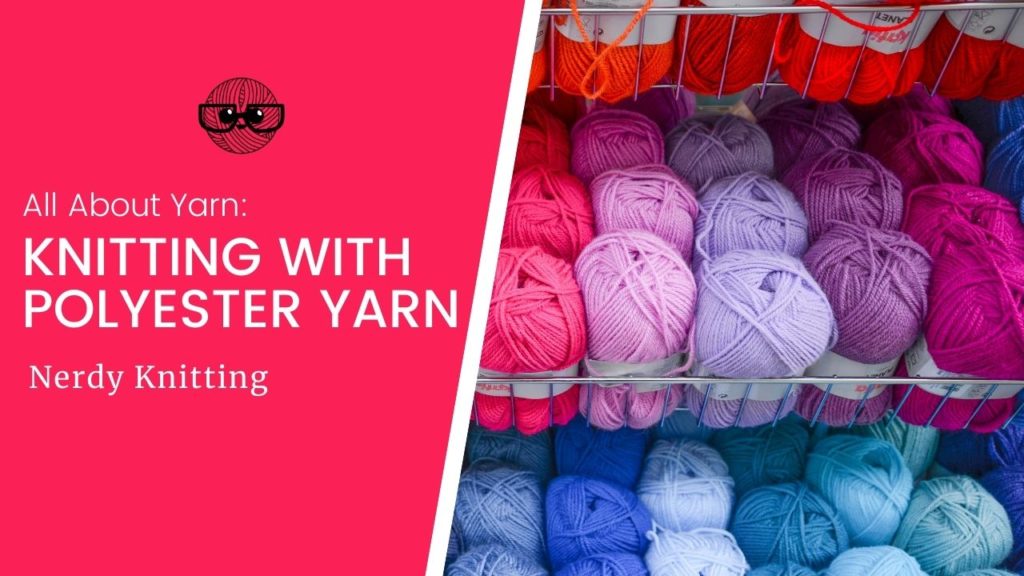While you might think ‘leisure suit’ when you hear the term polyester, it’s actually come a long way since then and can often be found in a variety of yarns. In this article we’ll look at knitting with polyester yarn – why it’s included in various yarns and what purpose it serves.
Polyester is commonly used for novelty yarns like chenille, furry, and other interesting textures. We’ll explore this topic and more while answering some of the most common questions people often have about polyester yarn.
Some links below are affiliate links. If you click through and make a purchase I may receive a small commission at no extra cost to you. See the disclosure policy for more information.
1. What is polyester yarn?
Polyester yarn is similar to acrylic yarn. It is a polymer-based material that is basically a form of plastic (and shares some similarities to plastic soda bottles). You’ll often find it listed using any of the following trademarked brand names: Dacron, Fiberfill, Coolmax, Microlux.
2. How is polyester yarn made?
Like all synthetic, man-made yarns, the process begins by mixing the base matter and turning it into a liquid. This thick liquid is forced through a spinneret with various sizes of holes (the diameter of the holes determines the circumference of the filaments). The liquid congeals and forms long filament threads. These threads can then spun into yarn – either alone or with other fiber sources.
3. What can I knit with polyester yarn?
Polyester is usually blended with other fibers to create lightweight, strong garments with good elasticity, as well as being easy to care for. It’s a good choice for garments that will need to be washed and dried often, like kid’s clothing, baby items (like blankets or bibs), or knit items that will be donated.
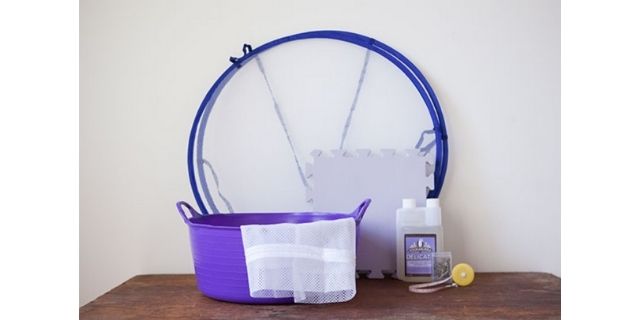
4. Is polyester yarn washable?
Polyester yarn is usually easy to care for so can be washed in the washing machine and dried on a low-heat setting in the dryer. If it’s blended with other fibers you’ll want to refer to the ball band on the yarn for specific care instructions because the additional fibers may change the care needs for the yarn.
5. What is the difference between acrylic and polyester yarn?
Both fibers are petrochemical-based and go through a similar manufacturing process to create useable yarn. Acrylic is made from a synthetic polymer called acrylonitrile while polyester is composed of molecular polymers within the ester group of chemical compounds.
Discover the Confidence You Need to Fix Your Knitting Mistakes

By the end of this six-part self-paced course, you’ll be able to read your knitting, recognize a variety of knitting mistakes, and understand how to fix them.
6. Does polyester yarn pill?
Polyester yarn can pill – depending on how the yarn was spun and the other included fibers. If the fibers were plied and tightly spun there is little likelihood that the yarn will pill. If it’s a single yarn or only lightly spun, there is more likelihood that the resulting yarn will pill.
7. Is polyester yarn heat resistant?
Polyester is not heat resistant and will shrink if exposed to high heat. Use low heat settings when drying polyester yarns and use the lowest iron setting that will produce steam if you are steaming the final garment.
8. What are the advantages of polyester yarn?
Polyester yarns are wrinkle resistant (even when they are wet), easy to care for, hold their shape well, and are strong and elastic. Polyester is often blended with natural fibers to give the final yarn some additional strength and stability.
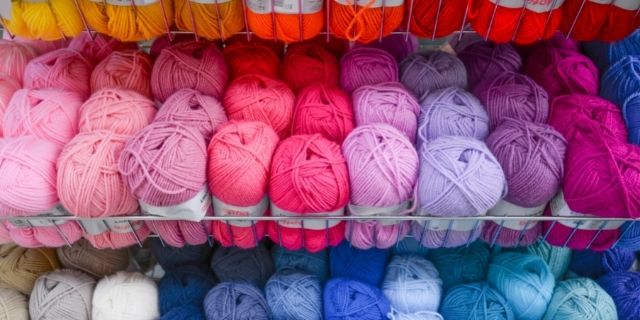
Best Polyester Yarns
Polyester has a few common uses in regards to yarns. They are often used to create a variety of novelty yarns. During the manufacturing process, it is fairly simple to change some of the elements – from the diameter of the holes in the spinneret to how the filaments are cut and spun – creating a completely new yarn.
Polyester is sometimes blended with other fibers (sometimes acrylic but often with natural fibers) to add some strength and stability to the final yarn. Projects knit with these blends tend to hold their shape well (as opposed to a 100% cotton yarn, which would sag and droop with time because cotton lacks any natural elasticity).
While there aren’t any ‘best’ yarns, if you want to give polyester yarns a try, you’ll find a selection below – a few novelty yarns as well as a few blends that combine polyester with natural fibers.
Interesting Polyester Novelty Yarns
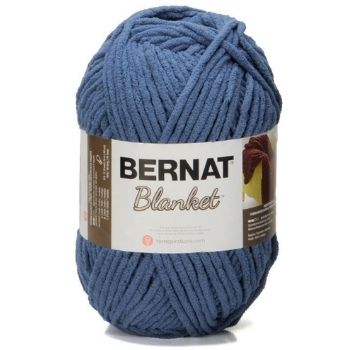
Novelty yarns are yarns that aren’t traditionally spun and plied. Instead, they can have a variety of interesting textures – from furry to fuzzy to boucle and chenille – and come in a variety of weights (though you’ll often find them commonly used in bulky and super-bulky weight yarns). Here are a few interesting polyester novelty yarns you can try:
- Bernat Pipsqueak (bulky textured chenille)
- Bernat Blanket (super-bulky chenille)
- Lion Brand Go For Faux (super-bulky faux fur)
- King Cole Jelly Bean (pom-pom yarn)
- Bernat Alize Blanket-EZ (finger-knitting yarn)
Polyester & Natural Fiber Novelty Yarns
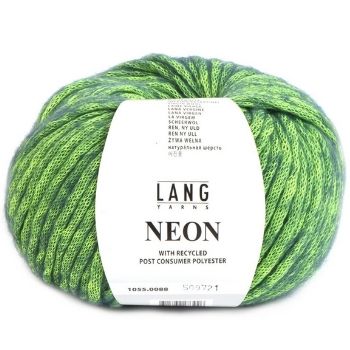
While the novelty yarns listed above are 100% polyester, they can also be blended with some natural fibers for even more interesting combinations. Here are a few to check out:
- Lang Yarns Neon (polyester & virgin wool)
- Wool & the Gang Mixtape Yarn (cotton & polyester)
- Lana Grossa Cresta (cotton & polyester)
- Paintbox Yarns Recycled Big Cotton (cotton & polyester)
- Rowan Patina (mohair, Merino wool, nylon & polyester)
Polyester Blended with Natural Fibers
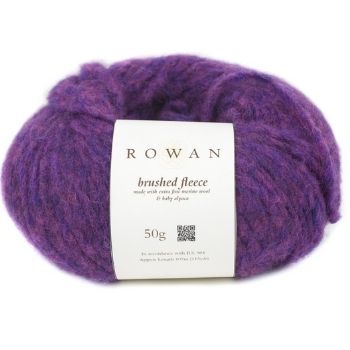
Sometimes you’ll find polyester added in small amounts to other traditionally-plied fibers to provide some additional strength and stability. It’s also included because it’s so inexpensive and can reduce the price of otherwise expensive yarn. Here are some yarns that include polyester with natural animal and plant fibers (but in a more traditionally-plied yarn instead of a novelty yarn construction):
- Rowan Brushed Fleece (wool, alpaca & polyester)
- Cascade Yarns ReBound (polyester & cotton)
- Cascade Yarns ReVerb (polyester & alpaca)
- Premier Yarns Home Cotton Stripe (cotton & polyester)
- Lang Yarns Merino 70 (Merino wool & polyester)
Now that you know more about polyester yarn, you may want to give it a try – especially some of those fun novelty yarns. Here are more resources and articles that you might find useful – especially if you’re interested in learning more about other fibers and yarns.
More About Yarns & Fibers
- The Knitter’s Book of Yarn by Clara Parkes (available at Amazon)
- Yarn Substitution Made Easy by Carol J. Sulcoski (available at Amazon)
- The Fleece & Fiber Sourcebook by Carol Ekarius & Deborah Robson (available at Amazon)
